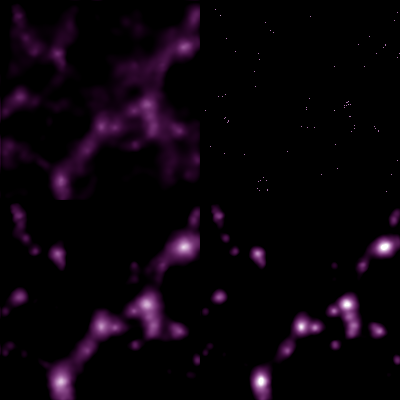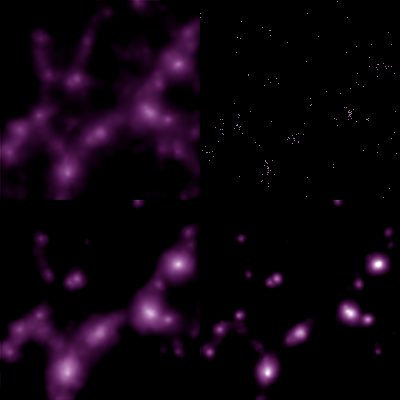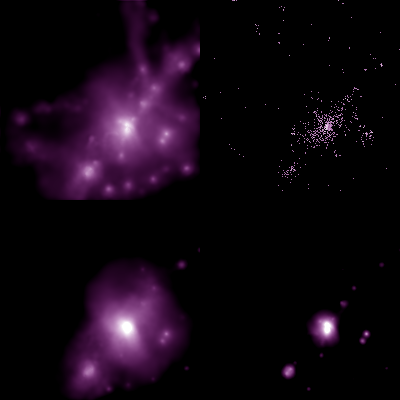
Clusters of galaxies are the largest gravitationally bound systems in the universe, with sizes of a few Mpc (a Mpc is about 3 million light-years). A typical cluster contains hundreds or thousands of galaxies, but most of the mass is in the form of a hot intracluster gas. This gas is heated to high temperatures (106-108K or several keV) in the potential well of the cluster. Clusters are rare objects: fewer than 1 in 10 galaxies in the universe resides in clusters, the rest are said to be ``field galaxies''.
Because they are the most massive objects in a universe in which structure is formed `bottom up' (i.e. by the merger of small objects to form ever larger objects) clusters provide excellent probes of structure formation and can be used to constrain our cosmological models. In particular how a cluster forms is an interesting question. The process of cluster formation in hierarchical theories is quite complex, as illustrated in the following (4Mb) QuickTime movie taken from a hydrodynamic simulation of the formation of large-scale structure. In the movie it is apparent that the cluster forms by the merger of many smaller clumps at the intersection of a filamentary large scale structure. The collapse of the filaments and the inflow of material along them into the proto-cluster is characteristic of structure formation in our universe.
The movie has 4 panels, each showing the projection of a particular quantity through a 10x10x10Mpc/h cube, centered on the final position of the cluster, extracted from the simulation. The color scale in each case is logarithmic, covering approximately 3 decades in range. The pictures are in comoving coordinates (i.e. the expansion of the universe has been factored out) but the frames are equally spaced in time. The model is a variant of the currently preferred LCDM cosmology, with a matter density of 30% of the critical density and a Hubble constant of 70km/s/Mpc.
Some frames from the movie are reproduced here. In the top left panel we show the projected gas density. The top right panel shows `galaxies', modelled using a semi-analytic prescription. The lower left panel shows the expected signal from the (thermal) Sunyaev-Zel'dovich effect while the lower right panel shows the thermal bremsstrahlung emission which would be detected in the X-ray band. The first frame shows the cluster forming through the merger of smaller objects, at a time about quarter-way to the present. The other frames are equally spaced in time, up to the current epoch.





